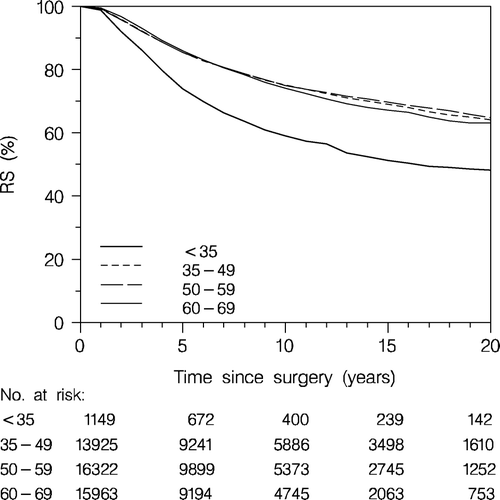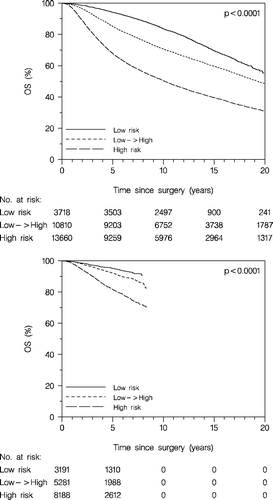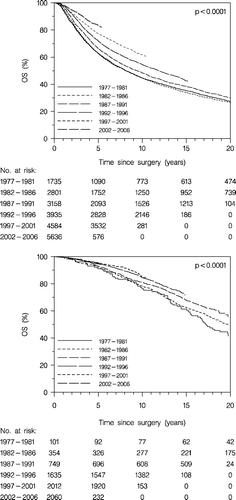Figures & data
Figure 1. Overall survival (OS) according to diagnosis period. All patients (enrolled and non-enrolled patients).
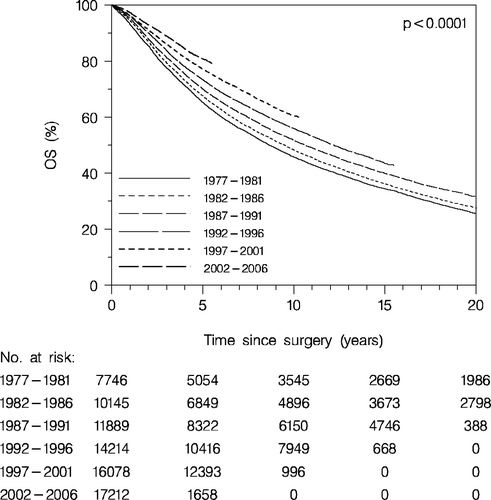
Figure 2. Overall survival (OS) (upper panel), and disease-free survival (DFS) (lower panel) according to diagnosis period. Enrolled patients.

Figure 4. Overall survival (OS) (upper panel), and disease-free survival (DFS) (lower panel) according to allocated risk groups. Enrolled patients <70 years.

Figure 5. Overall survival (OS) according to nodal status in all patients with lymph node assessment (upper panel), and in patients with at least 10 examined nodes or sentinel node technique applied (lower panel). Node-negative (0), 1-3 positive nodes, and 4+ positive nodes. Enrolled patients <70 years.
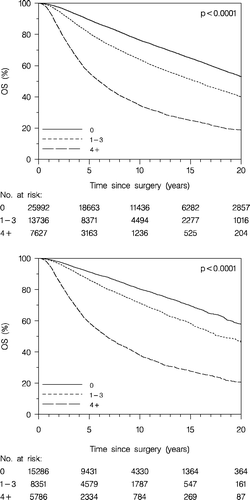
Figure 6. The distribution of patients according to number of lymph nodes examined (upper panel), and the distribution of nodal status according to time (lower panel). Enrolled patients <70 years.
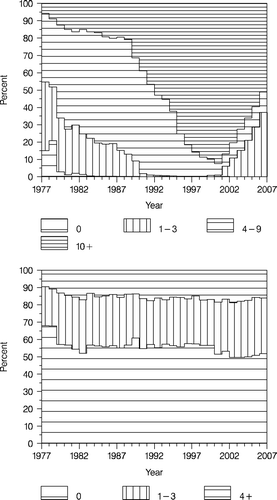
Figure 7. Overall survival (OS) according to tumour size (upper panel), and the distribution of tumour size according to time (lower panel). Enrolled patients <70 years.
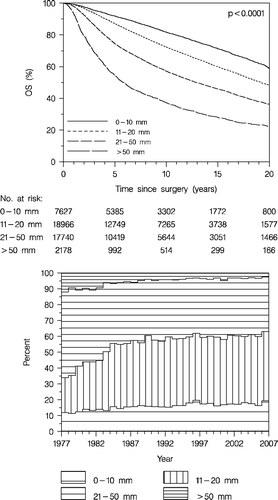
Figure 8. Overall survival (OS) according to malignancy grade (upper panel), and the distribution among malignancy grade I, II and III ductal carcinomas according to time (lower panel). Enrolled patients < 70 years.
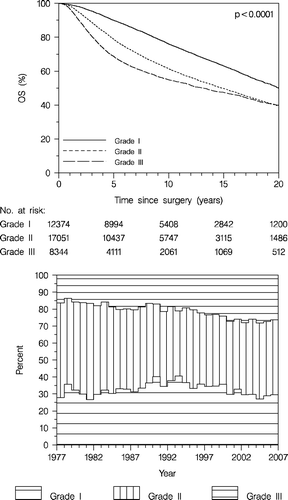
Figure 9. Overall survival (OS) according to receptor status (upper panel), and distribution of receptor status according to time (lower panel). Enrolled patients <70 years.
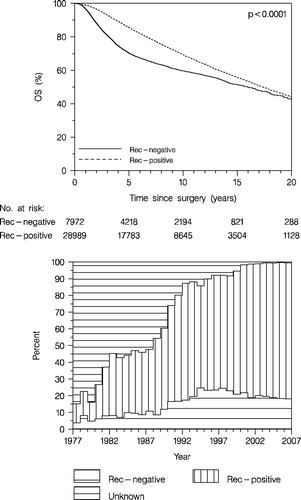
Figure 11. Disease-free survival (DFS) according to retrospective risk groups, the low → high risk group untreated systemically (upper panel), and treated systemically (lower panel). Enrolled patients <70 years.


